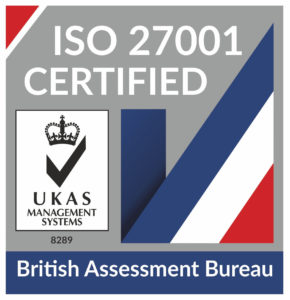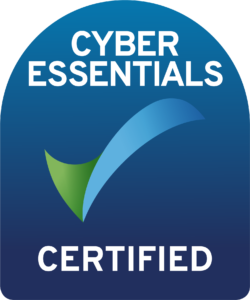
HaloITSM Guides
Documentation to assist with the setup and configuration of the HaloITSM platform
Billing Rules (Formerly Billing Plan Combinations)
In this lesson we will cover:
- How to set up billing rules
- Worked example
- Checkboxes "User must be covered by the Agreement" and "Asset must be covered by the Agreement"
- Checkbox "Allow other Customers Agreement's to be chosen"
- Checking to see if the action was covered by the Agreements Hours
- Linking an Agreement to a Ticket Manually
- Associate an action to a contract without using the contract hours
For a General Overview of Billing Rules, check out this video here:
Billing Rules are an automatic method of connecting different ticket types, charge rates and categories to a specific Agreement(Contract). The same Agreement can have multiple ticket types linked to it. For example, an Agreement can include both incidents and service requests when a user submits a ticket. The billing rules can be used to distinguish what type of labour should be billed for i.e. You may want to bill for the charge type "On-Site" being used on all ticket types apart from ticket types "Incident" this can be done using the correct "catch-all apart from incident tickets" sequencing, as displayed in figure 5. The sequence is how the system checks each line of the billing rules i.e. it will check the first in the sequence and if unmatched it will check the second line, if unmatched then the third, and so on.
Setting Up Billing Rules
To configure billing rules select a client within the clients tab and go into their settings. To add a billing rule click ‘add’.
Fig 1. New Billing Rule
From here you can set an action on a ticket to be billed in a particular way or covered by an existing agreement if it meets criteria set here.
Fig 2. Billing Rule Options For a New Line
The example below shows when an Incident or Service Request ticket type is logged with client Acorn Construction, it will be billed based on Agreement: SP0001.
Note: "Working Hours are Those of The Customer" refers to the SLA's being used on the ticket. SLAs can be set per ticket type, using rules or overridden per customer.
Fig 3. Setting a Billing Rule
If the ticket that is logged is not an incident or request and the remote support charge rate is not selected (if the ticket type is Incident), then any other combination will be treated as ‘Pay as you go’ as I have clicked on "Pay as you go" for unmatched criteria.
Fig 4. Treat Unmatched as
The sequence on the list shows how Halo iterates through the lines to match on criteria and decide whether or not to bill or add to the Agreement. If you have a criteria set that is catching all tickets of a certain type for all charge rates, you will want to leave this further down the list so that the more niche criteria matching is matched on first before the generic ones that might be a catch all type of billing rule.
An Example of Remote and On-Site Support Coverage
Many of our Halo customers may find the following Billing Rule a good standard for dealing with all cases in a simple manner:
Fig 5. A Catch All Excluding Standard On-Site Support
The sequencing of the billing rule, is set up the following way:
- If the client has a high priority issue when you are on-site, that will be covered by the contract
- When there is on-site support it will be a pay as you go service
- All other support that is not caught by the initial two lines in the Billing Rules, will be consumed by the contract
Checkboxes "User must be covered by the Agreement" and "Asset must be covered by the Agreement"
Within an Agreement there are tabs for assets and users, each contain a table where you can input the respective lines. The below options can be checked on when adding lines into a billing rule.
Fig 6. Options for agreement cover on the configuring of a billing rules criteria
If either of these settings are clicked, the asset or user assigned to the ticket, will have to appear in the table on the Agreement in order to be caught by the Agreement and for the time taken to come out of the agreement. Time taken from the agreement is displayed on the ticket.
Checkbox "Allow other Customers Agreement's to be chosen"
This will allow you to consume hours of another clients Agreement but within the same billing plan i.e. the ticket was for Client A but the charge rate associated was specifically related to Client B, then you could set on the criteria of the billing rule that if i.e. charge rate is "Remote Support For Client B" then take time from the Agreement associated to Client B.
Fig 7. Checkbox for "Allow other Clients Agreements(Contracts) to be chosen"
Checking to see if the action was covered by the Agreements Hours
Now when I add a remote support charge rate to an action on a ticket that will have a ticket type caught by my billing rule, the time taken on the action will be deducted from the Agreement.
Fig 8. Agreement Hours Shown on Action
Clicking on the ellipse of the action and going to the time tracking tab, we will see the following information, the Agreement ID can be clicked into, to check to see if the correct Agreement has consumed the time for the charge rate.
Fig 9. Clicking on Edit Action
Fig 10. Billable Info on The Time Tracking Tab of The Action
Note: It is important to note that the Billed Hours will come in to play as soon as the client goes over their hours set on the Agreement. If hours per period are exceeded, time on actions will be billed for i.e. Awaiting Review or in Ready for Invoicing *Explained in other Lessons*. There are also some other configurable behaviours in the Agreement settings, explained in the administrator guide for Agreements.
Fig 11. Hours Per Period on The Agreement (If exceeded, time on actions will be billed for i.e. Awaiting Review or in Ready for Invoicing *Explained in other Lessons*)
Linking an Agreement to a Ticket Manually
Another method of linking an agreement to a ticket is done when a new ticket is raised (see image below). This manual method is typically done by organisations who have not set up billing rules.
Note: It is important to note that if billing rules have been set up, it is advised not to use this method as this will override the billing rule.
If billing plans have been set up, you can add/remove the Agreement field in Configuration > Tickets > Ticket Types > Field List > Edit and Remove Agreement Field.
On the newly created ticket, once the end-user details have been selected and the appropriate ticket details have been noted, the agent will then have to select the Agreement that relates to the ticket.
When all the details are correct, submit when completed.
Fig 12. Setting an Agreement against a Ticket
If the agent of the ticket has selected an amount of time that has now gone over the over all pre-set amount of hours within the Client Agreement, the chargeable hours will appear within Invoices > Ready for Invoicing > Labour or Awaiting Review If turned on. Again, other configurable options detailed in the administrator guides can cause other behaviour as explained in the guide.
Associate an action to a contract without using the contract hours
Time can be assigned to a contract but not be part of the included hours so that it can be invoiced. You can set billing plan lines to appear against the agreement but also appear in ready for invoicing. Within the billing plan line configuration, you can set the "Billing Plan" single select to be the associated contract, this will make the checkbox option "Do not use Agreement hours (Labour will be invoiced)":
Fig 13. Do not use Agreement hours setting
Now, any actions that meet this criteria will be associated with this contract, but the time will be charged separately to this agreement.
Popular Guides
- Asset Import - CSV/XLS/Spreadsheet Method
- Call Management in Halo
- Creating a New Application for API Connections
- Creating Agents and Editing Agent Details
- Departments and Teams
- Halo Integrator
- Importing Data
- Multiple New Portals with different branding for one customer [Hosted]
- NHServer Deprecation User Guide
- Organisation Basics
- Organising Teams of Agents
- Step-by-Step Configuration Walk Through
- Suppliers



